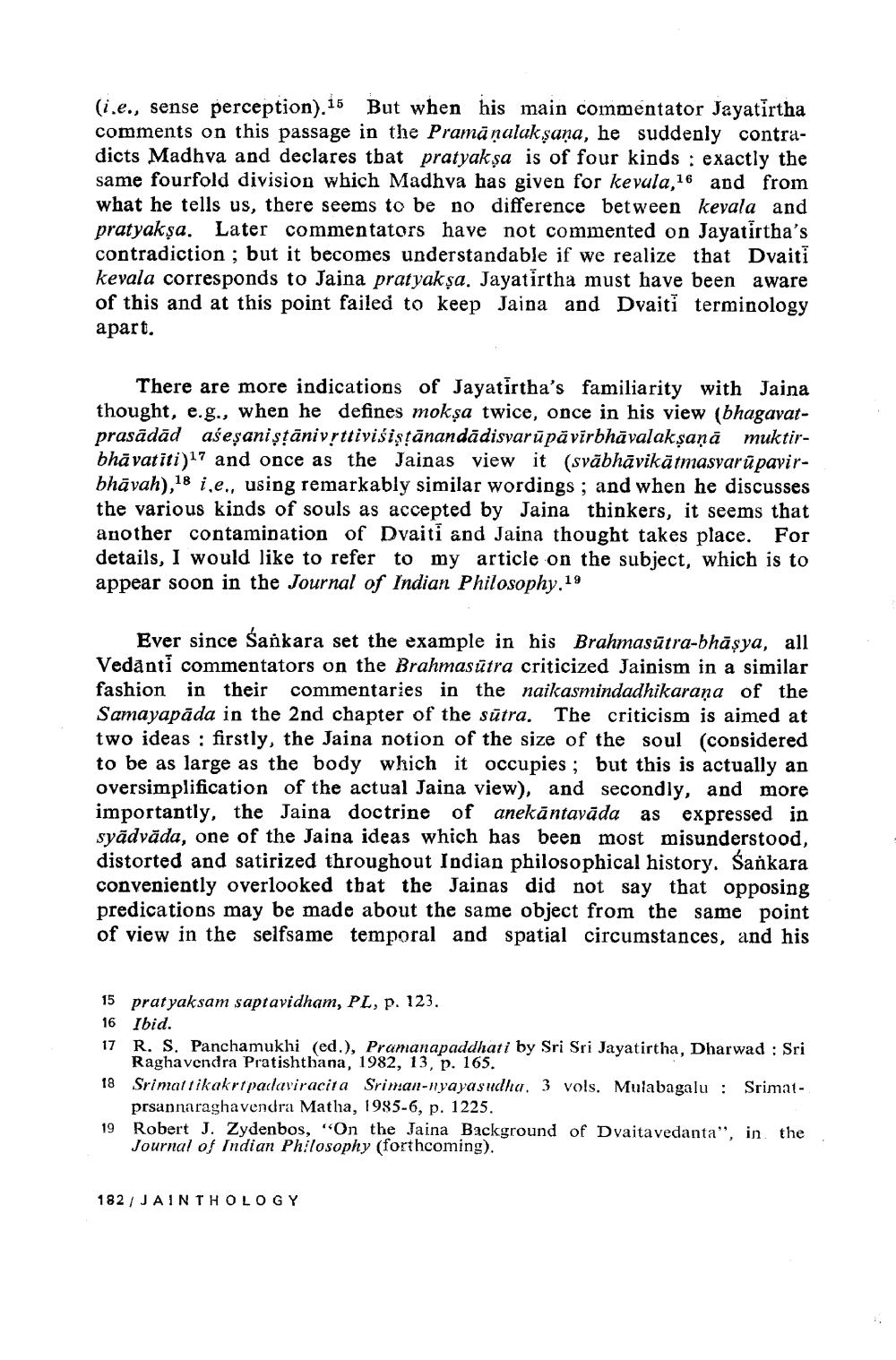________________
(i.e., sense perception).15 But when his main commentator Jayatirtha comments on this passage in the Pramanalakṣaṇa, he suddenly contradicts Madhva and declares that pratyakṣa is of four kinds : exactly the same fourfold division which Madhva has given for kevala,16 and from what he tells us, there seems to be no difference between kevala and pratyakṣa. Later commentators have not commented on Jayatirtha's contradiction; but it becomes understandable if we realize that Dvaiti kevala corresponds to Jaina pratyakşa. Jayatirtha must have been aware of this and at this point failed to keep Jaina and Dvaiti terminology apart.
There are more indications of Jayatirtha's familiarity with Jaina thought, e.g., when he defines mokṣa twice, once in his view (bhagavatprasādād aśeṣaniṣṭānivṛttivisiṣṭānandādisvarūpāvīrbhāvalakṣaṇā muktirbha vatiti)1 and once as the Jainas view it (svabhävikātmasvaru pavirbhāvah),18 i,e., using remarkably similar wordings; and when he discusses the various kinds of souls as accepted by Jaina thinkers, it seems that another contamination of Dvaiti and Jaina thought takes place. For details, I would like to refer to my article on the subject, which is to appear soon in the Journal of Indian Philosophy.15
19
Ever since Sankara set the example in his Brahmasutra-bhāṣya, all Vedanti commentators on the Brahmasutra criticized Jainism in a similar fashion in their commentaries in the naikasmindadhikarana of the Samayapada in the 2nd chapter of the sutra. The criticism is aimed at two ideas firstly, the Jaina notion of the size of the soul (considered to be as large as the body which it occupies; but this is actually an oversimplification of the actual Jaina view), and secondly, and more importantly, the Jaina doctrine of anekāntavāda as expressed in syādvāda, one of the Jaina ideas which has been most misunderstood, distorted and satirized throughout Indian philosophical history. Śankara conveniently overlooked that the Jainas did not say that opposing predications may be made about the same object from the same point of view in the selfsame temporal and spatial circumstances, and his
15 pratyaksam saptavidham, PL, p. 123.
16 Ibid.
17 R. S. Panchamukhi (ed.), Pramanapaddhati by Sri Sri Jayatirtha, Dharwad : Sri Raghavendra Pratishthana, 1982, 13, p. 165.
18 Srimattikakrtpadaviracita Sriman-nyayasudha. 3 vols. Mulabagalu : Srimatprsannaraghavendra Matha, 1985-6, p. 1225.
19 Robert J. Zydenbos, "On the Jaina Background of Dvaitavedanta", in the Journal of Indian Philosophy (forthcoming).
182 JAINTHOLOGY




